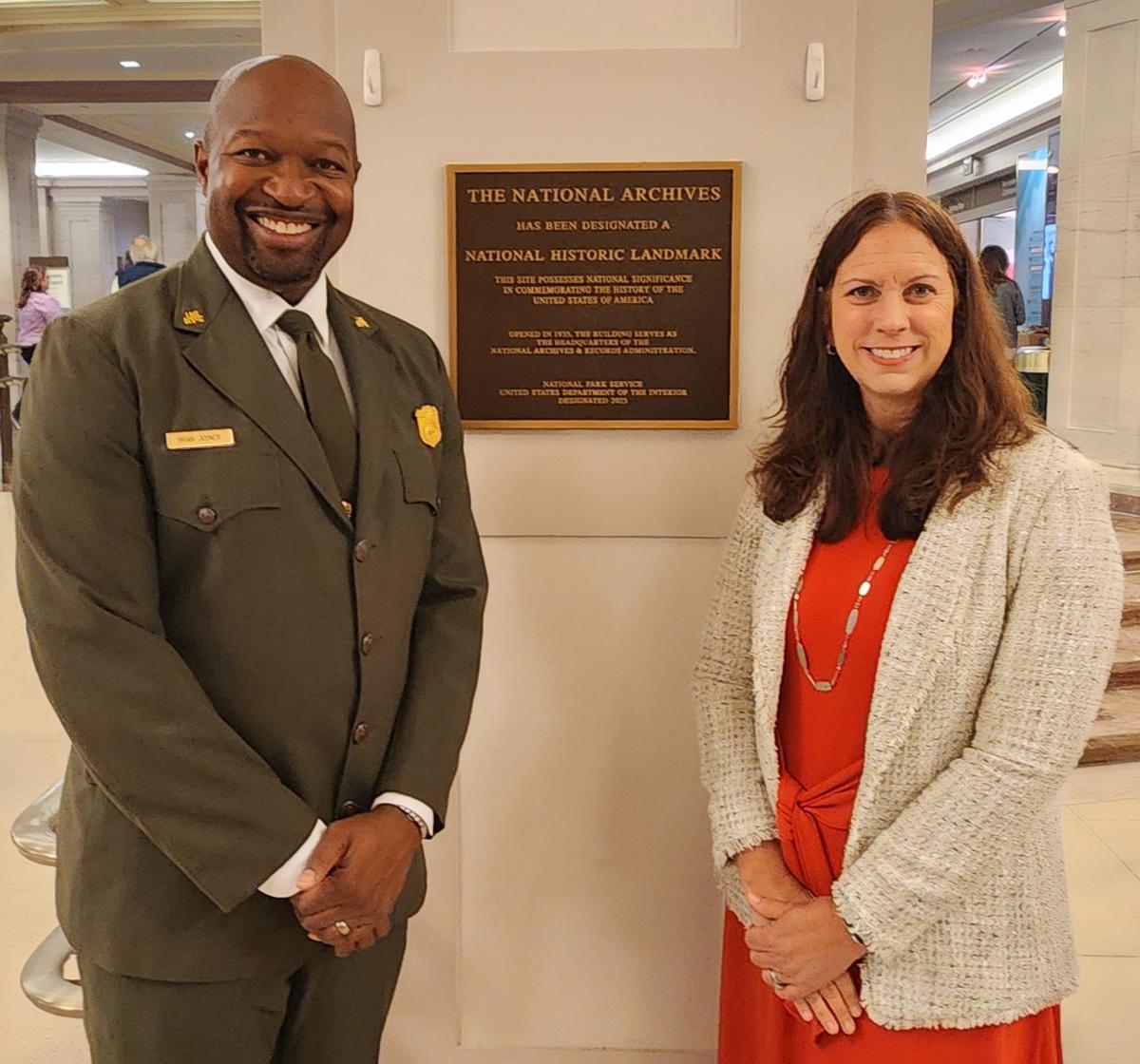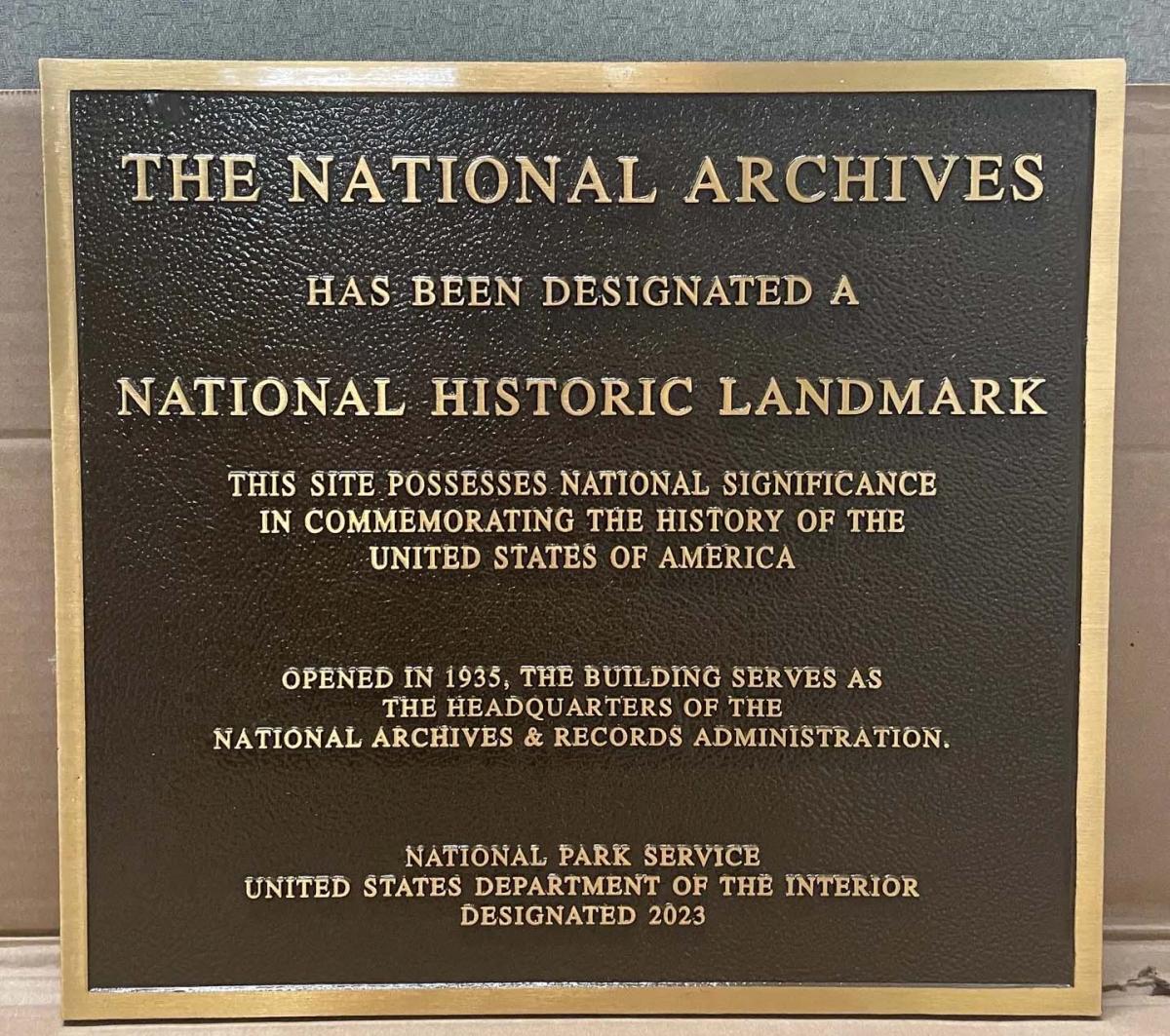
National Archives Building Gets Historic Landmark Designation and Plaque
By Cara Moore Lebonick and Angela Tudico | National Archives News
WASHINGTON, August 22, 2024 — The National Archives Building has joined the distinguished ranks of National Park Service-designated National Historic Landmarks. This milestone—held by only 2,600 structures across the country—was achieved in December 2023, and the official plaque was unveiled with a ceremony today, August 22, 2024.
The accomplishment was a significant undertaking led by National Archives Historian Jessie Kratz over the past decade.
“When architect John Russell Pope designed the National Archives Building, he not only intended for it to be the first permanent home for historically valuable records of the federal government, but he also wanted it to be an inspiring structure to rival the great monuments of the nation’s capital,” Kratz said. “Today’s ceremony is recognition that he achieved his goal. This building’s art and architecture are unparalleled.”
Archivist of the United States Dr. Colleen Shogan provided opening remarks at the ceremony.
“The National Archives, the building we are standing in right now, is equidistant between the White House and the Capitol, signifying that the National Archives is the repository of the records from both sides of Pennsylvania Avenue, representing all of the people, preserving the history of the United States,” Shogan said. “I'm very thankful that [Pope] thought of things in that way because it is functionally important that we are situated where we are, but it also is, of course, symbolically important for where we are. It is fitting, therefore, that this building joins its rightful place as a National Historic Landmark.”
Brian Joyner, acting superintendent of Rock Creek Park, served as a representative from the National Park Service, the federal agency that oversees the Landmark program, and spoke at the event.
“This historic location we celebrate today physically represents the origins of this nation by both contributing to a more perfect union through access and education, by reminding us to look backwards and learn from our past while we look forward to a more perfect union,” Joyner said. “I am struck by the murals and paintings on the wall here, ‘study the past, and the past is prologue.’”
Joyner continued, “The nomination for the National Archives was funded by the National Park Service. It's part of the [America] 250th initiative, and we are pleased to have worked with a partner like you all, the National Archives and Records Administration, to recognize this unique place. NARA has carefully stewarded this property since its construction, preserved its beauty and stories, kept it open as a place for the public to learn. The National Park Service and the Department of the Interior look forward to continuing our partnership with the National Archives as it continues to steward this special historic place and the peoples and stories reflected in it."
The process to gain National Historic Landmark status began in earnest in 2014 with an initial application. In 2021, the National Archives hosted Dr. Steven Bedford to present his completed National Historic Landmark study on the national significance of the National Archives Building, a critical step toward achieving Landmark status. On August 16, 2023, the National Park Service Advisory Board voted to recommend their approval on the National Historic Landmark nomination for the National Archives Building, moving the building another step closer to the status fully achieved later that year in December.
As Kratz notes in her Pieces of History blog post regarding her process over the years:
“To become a Landmark, a site must have national significance. It must also demonstrate exceptional value or quality in illustrating or interpreting the heritage of the United States in history, architecture, archeology, technology, and culture. A National Historic Landmark must possess a high degree of integrity of location, design, setting, materials, workmanship, feeling, and association, and meet one or more from six additional criteria.”
An Archives.gov Special Topics page looks closely at the “most ornate structure in Washington, DC’s Federal Triangle.”
National Historic Landmark records in our holdings document buildings coast to coast with proven intrinsic historic value. The record generated by the application will also provide future stakeholders with a concise history of the cultural and historical value of the National Archives Building. Now the National Archives’ own flagship building publicly displays its new plaque that testifies to its historical and architectural importance.
“The National Archives is proud of this achievement, and to share it with visitors as one of the first and most prominent sights upon entering the National Archives Building from Constitution Avenue,” Shogan said.

